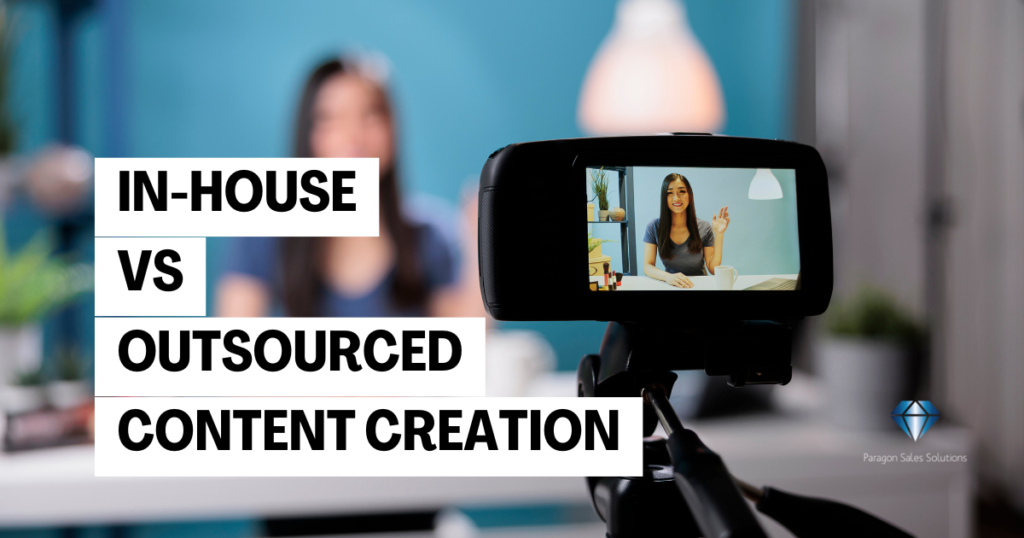Content creation is essential for building brand authority, boosting SEO, and generating leads. But as your business grows, the big question arises: should you produce content in-house or outsource it to an agency or freelancers? There’s no one-size-fits-all answer—it depends on your goals, budget, and available resources. In this blog, we’ll explore the pros and cons of in-house vs outsourced content creation, helping you make the best decision for your business.
1. Understanding the Differences
✅ In-house content creation means your team writes, designs, and produces content internally—either by your marketing team or dedicated content creators. ✅ Outsourced content creation involves hiring a third-party agency or freelancers to produce content on your behalf.
Both approaches can work well, but they each come with unique benefits and challenges.
2. Pros of In-House Content Creation
✅ Brand familiarity – Your internal team knows your brand’s tone of voice, values, and goals better than anyone. ✅ Real-time collaboration – Being in the same office (or virtual workspace) allows for faster feedback and collaboration. ✅ Greater control – You can manage the workflow, deadlines, and direction more directly. ✅ Consistency – Regular communication helps maintain consistent messaging and style.
If your team has the time and skills, in-house creation can produce content that feels truly aligned with your brand.
3. Cons of In-House Content Creation
⛔ Time-consuming – Content takes time to research, write, edit, design, and distribute. ⛔ Resource-heavy – You may need to hire full-time staff, purchase software, or invest in training. ⛔ Creative fatigue – Small teams can struggle to produce fresh ideas consistently.
Without proper support, in-house teams may struggle to keep up with demand for high-quality, consistent content.
4. Pros of Outsourcing Content Creation
✅ Access to experts – Agencies and freelancers bring specialist skills in writing, SEO, video, and design. ✅ Scalability – You can scale your content efforts up or down depending on your needs. ✅ Cost-effective – Outsourcing can often be cheaper than hiring full-time staff, especially for smaller businesses. ✅ Fresh perspective – External creators can bring new ideas and creative angles you might not have considered.
Outsourcing is especially useful when you need to produce a high volume of content quickly or lack internal resources.
5. Cons of Outsourcing Content Creation
⛔ Less brand familiarity – External creators may need time to understand your voice and tone. ⛔ Communication challenges – If not managed well, feedback loops and revisions can cause delays. ⛔ Quality inconsistency – Unless you work with a trusted partner, quality can vary between freelancers or agencies.
To succeed with outsourcing, it’s important to provide clear briefs, guidelines, and expectations.
6. When to Keep It In-House
✅ You have a strong internal marketing team. ✅ Brand consistency and control are your top priorities. ✅ You’re producing highly technical or confidential content. ✅ You have the time and budget to invest in content training and tools.
In-house works well when your team is capable and content is deeply tied to internal knowledge.
7. When to Outsource Your Content
✅ You need to scale content quickly. ✅ Your team lacks the time or expertise. ✅ You want fresh ideas or a new creative approach. ✅ You’re running time-sensitive campaigns.
Outsourcing is ideal when speed, quality, and volume are priorities, and you want to free up internal resources.
Conclusion
Both in-house and outsourced content creation have their strengths and limitations. The best solution might even be a hybrid approach—producing strategic content in-house while outsourcing blogs, videos, or SEO articles to trusted partners. Whichever path you choose, the key is to ensure your content is consistent, valuable, and aligned with your business goals.
To learn more about how Paragon Sales Solutions can support your content creation needs, whether in-house or outsourced, please get in touch or book your FREE consultation.

